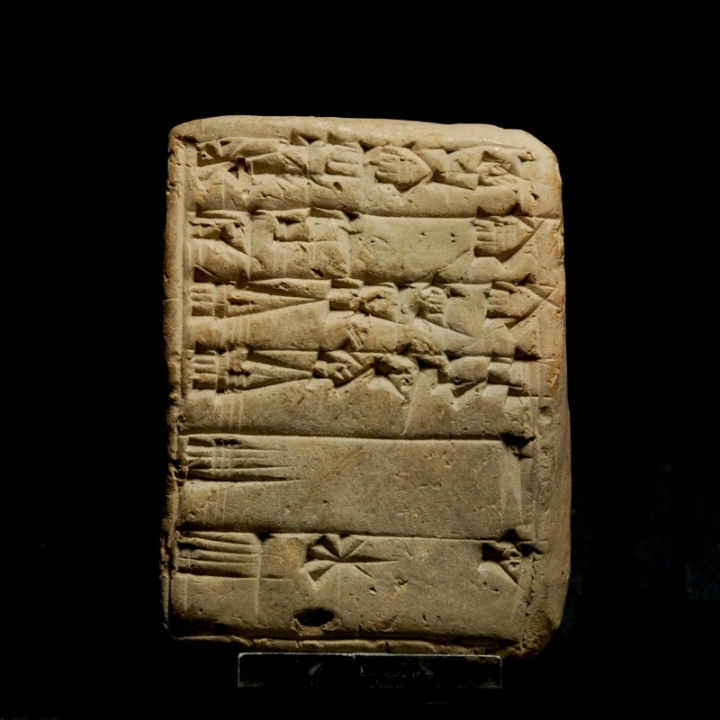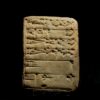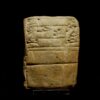Cuneiform Clay Tablet of King Sin-kāšid
Culture: Sumerian
Period: 1800-1770 B.C.
Material: Clay
Dimensions: 8.5 cm x 6.6 cm
Price: Sold
Ref: 6130
Provenance: From the autograph collection Herbert Adam, Germany. Acquired in February 1964. With a copy of the invoice as well as a handwritten note by Herbert Adam, referring the translation to the assyriologist and Sumer expert Samuel Noah Kramer (1897-1990).
Condition: The inscription area is wonderfully preserved. One small, insignificant wear on the edge, otherwise intact.
Description: Two-sided inscribed clay tablet announcing the construction of a temple by “Sîn-kāšid“, “the powerful man, King of Uruk, King of Amnānum”. Sîn-kāšid is especially famous for freeing the city state Uruk from the control of Larsa and founding an around 50 year-long dynasty. After marrying a Babylonian princess he had close contact with the court in Babylon, this is why he called himself in his inscriptions King of Amnānum, the bloodline from which the royal Babylonian family originates. But his name especially outlived all these times because he built an enormous palace, Ekituššaḫula. In its walls numerous bricks, clay tablets and foundation cones with the name Sîn-kāšid were found, which can today be admired in museums and private collections all over the world.





